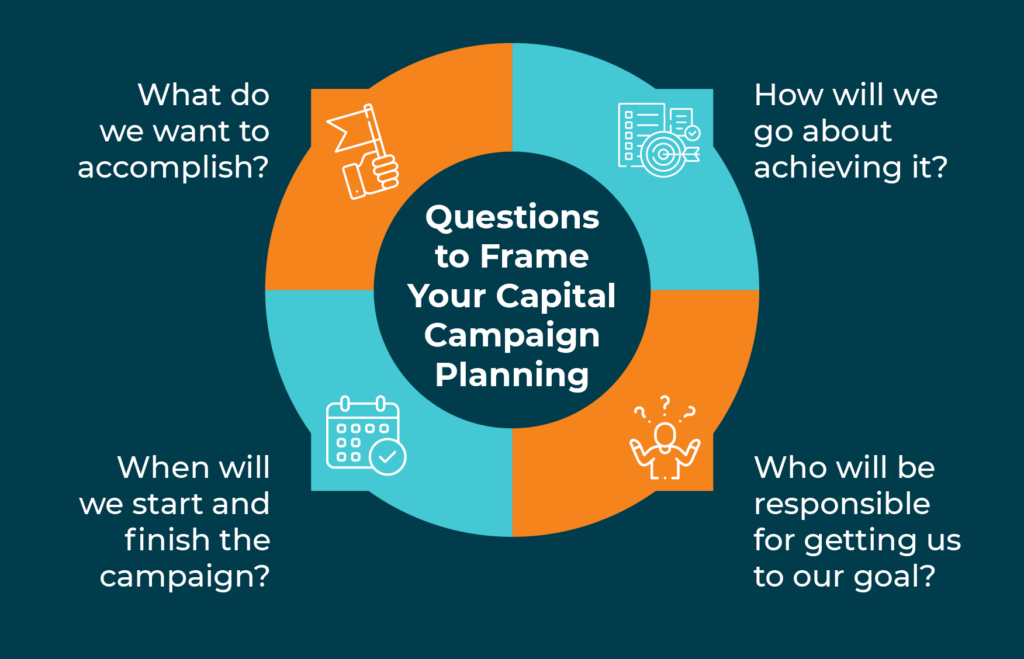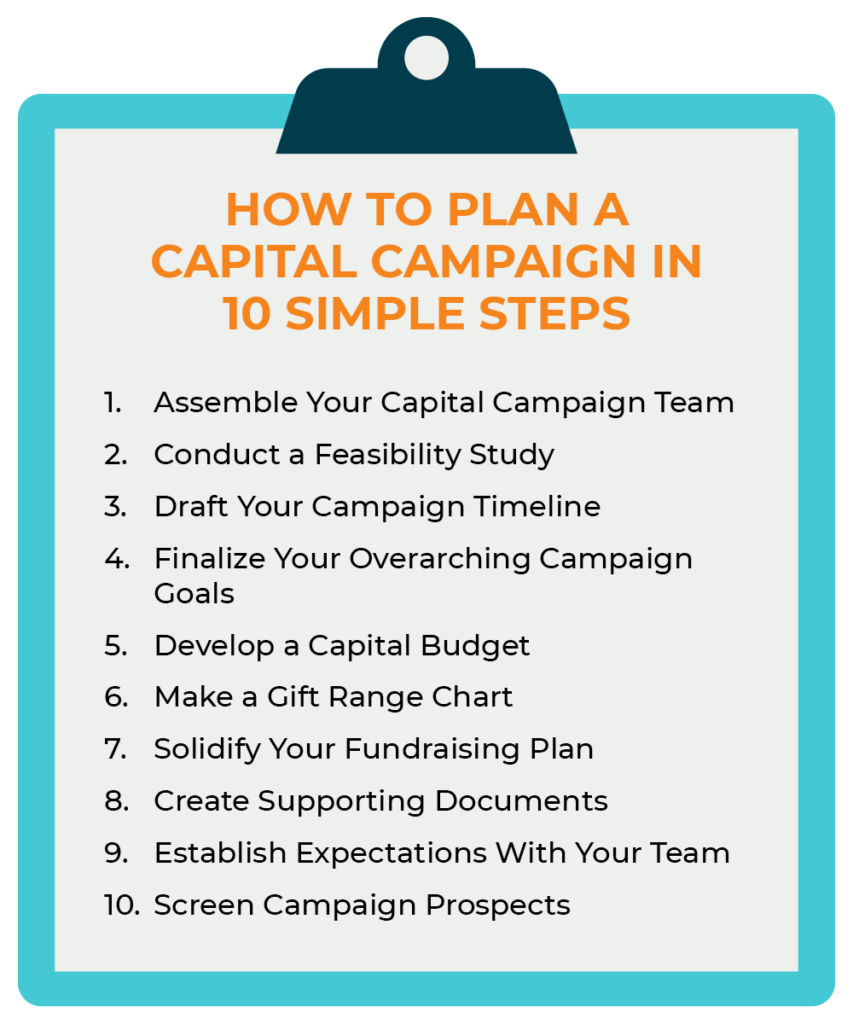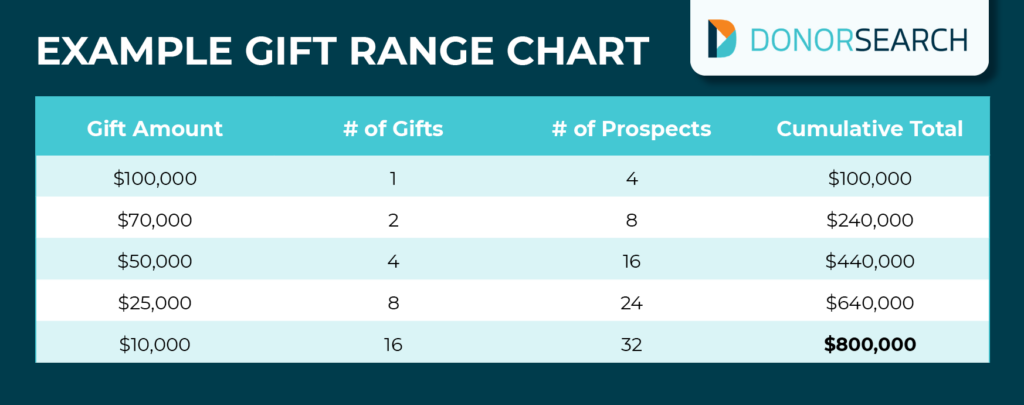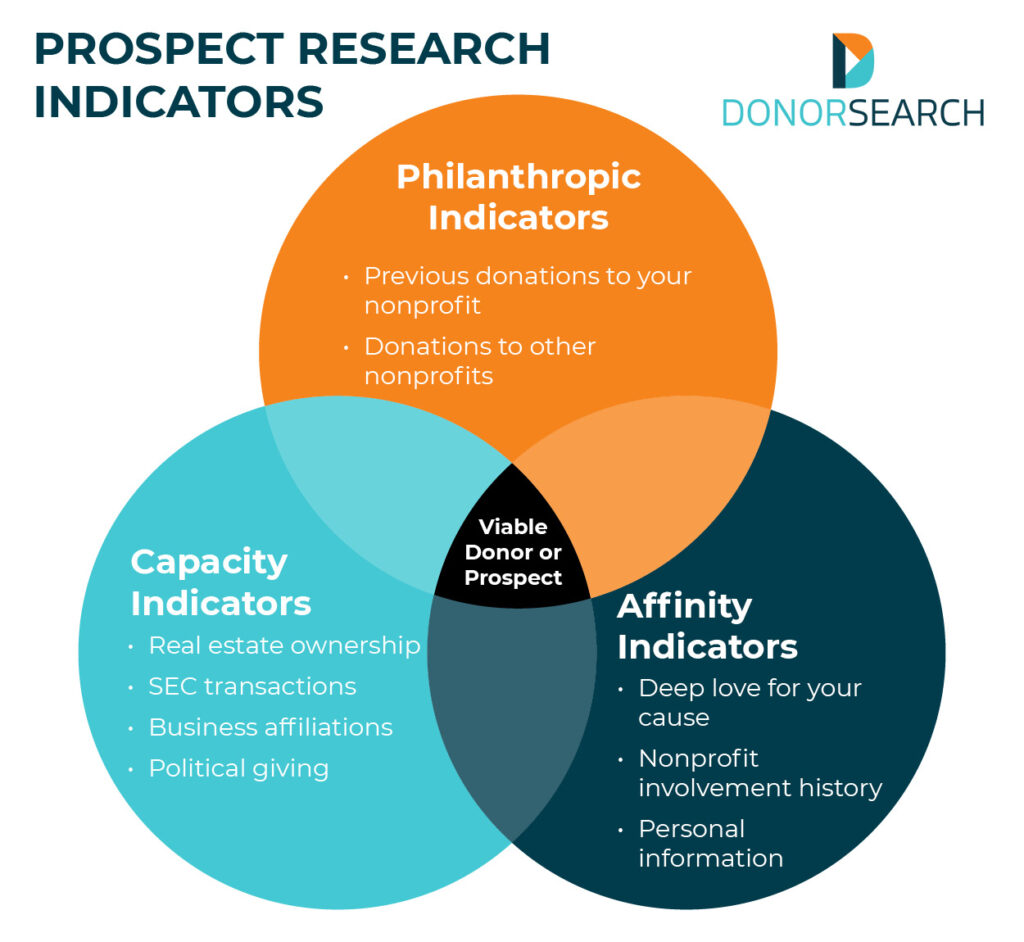
How to Create a Capital Campaign Plan That Gets Results
If your nonprofit has a significant fundraising need, such as an upcoming construction project or purchase of expensive equipment, a capital campaign may be the best way to generate that revenue. Capital campaigns are extremely effective—as of 2024, 96% of nonprofits that launched these efforts considered them successful, and many exceeded their original fundraising goals.
However, large-scale campaigns require careful planning to achieve these results without draining your nonprofit’s existing resources. In this guide, you’ll learn everything you need to know about capital campaign planning, including:
- What is a capital campaign plan?
- Questions to Frame Your Capital Campaign Planning
- Steps to Plan Your Organization’s Capital Campaign
Before we dive into how to plan a capital campaign, let’s lay the groundwork by defining some key terms and guiding questions.

What is a capital campaign plan?
A capital campaign plan is a resource that lays out the major steps for organizing a large-scale fundraising effort. It often incorporates multiple documents, from budgets and timelines to gift range charts and lists of potential major donors, but it serves as the source of truth for your whole nonprofit throughout the campaign.
Before we go any further, it’s also important to define exactly what a capital campaign is: a targeted, major fundraising effort that takes place over a defined period of time. These campaigns typically span multiple years and can raise millions of dollars for purposes such as:
- Constructing or expanding buildings
- Acquiring property
- Making large-scale equipment purchases (e.g., new computers for a school or new X-ray machines for a hospital)
- Launching a new mission-driven program
Any nonprofit—regardless of size or vertical—can launch a capital campaign with the right tools, a strategic plan, and dedication from its team to working toward one clear goal.

Questions to Frame Your Capital Campaign Planning
If this is your first time planning a capital campaign and you aren’t sure where to start, you’ve come to the right place! To guide your process, start by asking yourself the following questions:

- What do we want to accomplish? This will help you finalize your campaign’s primary goal—to fulfill your specific funding need.
- How will we go about achieving it? This question will get you thinking about various aspects of your fundraising process—campaign stages, solicitations, budgeting, etc.
- Who will be responsible for getting us to our goal? This question will help you assemble your team (more on this later!).
- When will we start and finish the campaign? Your answer to this question will lay the foundation for your campaign timeline (more on this later, too!).
Consider asking multiple staff members, board members, and outside stakeholders who will be involved in your campaign for input on these questions. This way, you’ll hear several perspectives and be able to develop a more informed plan.
Steps to Plan Your Organization’s Capital Campaign
At this point, the basics of your capital campaign plan are likely starting to form in your mind, so it’s time to get into the weeds of the planning process. We’ve broken it down into the following 10 steps to make it more actionable and less overwhelming for your nonprofit.

1. Assemble Your Capital Campaign Team
Capital campaigns are all-hands-on-deck efforts, requiring the commitment of various individuals inside and outside your organization. In particular, your campaign team should include:
- Staff members. Due to the nature of capital campaigns, your leadership team—particularly your executive and fundraising directors—will be heavily involved in organizing and managing yours. However, many staff members from across your nonprofit, such as your major gift officers, financial professionals, and marketing team, will be involved in different aspects of the campaign.
- Board members. In addition to overseeing your campaign internally, your board’s position as liaisons between your organization and its community gives them the perfect opportunity to promote your efforts externally. Plus, approximately 15% of capital campaign giving comes from board members, and their gifts can inspire other donors to contribute.
- Volunteers. Volunteers can take many mundane campaign tasks off your plate, from stuffing fundraising letter envelopes to setting up for your kickoff event. Especially if volunteers are longtime supporters or previous recipients of your nonprofit’s services, they may also provide helpful advice and perspectives to help you fine-tune your campaign.
- Fundraising consultants. Most nonprofits recruit external professionals to help with some aspects of their capital campaigns, whether the consultant leads the campaign themselves or provides resources to guide your team. No matter their level of involvement, fundraising consultants bring years of experience helping other nonprofits of all shapes and sizes, so they can create informed strategies for your organization.
Form a planning committee to work through the rest of the steps in this guide and a steering committee to keep your capital campaign on track once it launches, choosing the members from among these groups. You might form other committees as the campaign progresses to address specific needs like event planning and sponsorships, and you’ll need to appoint a chair to oversee all of the committees and be the face of your campaign in the community.
2. Conduct a Feasibility Study
A feasibility study assesses whether your nonprofit has the capacity and community support to succeed with a capital campaign. During the study, your organization will critically review its resources, internal data, and the external market. A series of 30-40 interviews with key stakeholders, like prospective donors and current and past board members, will also be a major part of the feasibility study (which is where a consultant can be extremely helpful).
Some focus areas to consider during your feasibility study include:
- The community’s perception of the proposed project and your organization as a whole.
- Your nonprofit’s past fundraising results and metrics achieved.
- The number of donors you expect at each giving level.
- Available internal resources and needs, such as fundraising software and revenue to cover upfront costs.
- External factors that could impact the campaign, like the economy or competitors’ fundraising efforts.
When you put all of this information together, you’ll get a good idea of whether your nonprofit is ready for a capital campaign. If the answer is “yes,” you can dive into the rest of the planning process. If it’s “no,” don’t get discouraged—the real answer may just be “not yet,” and you’ll be ready once you make some adjustments to your processes or wait for your nonprofit to recover from recent challenges.
3. Draft Your Campaign Timeline
A defining characteristic of capital campaigns is that they need clear deadlines. Because they take up so much of your nonprofit’s time and resources, letting them go on indefinitely isn’t sustainable.
Set a realistic deadline for your capital campaign, accounting for unexpected events that could get in the way. Capital campaigns usually last at least a year (and could be longer), so pick a date based on your project and feasibility study results. While your deadline should be defined, you can extend it later if necessary or continue fundraising if you reach your goal beforehand.
Then, work backward to create a campaign timeline that covers the following stages:
- Planning phase: This stage covers all of your starting steps post-feasibility study, so it will already have begun when you create your timeline and ends when you start reaching out to donors.
- Quiet phase: In your first fundraising phase, you’ll send targeted appeals to pre-selected donors and sponsors for the major gifts that will make up approximately 60-70% of your overall fundraising goal.
- Campaign kick-off: This is when you’ll introduce your campaign to the public with a major marketing push, public relations work with local media, and a special event.
- Public phase: Your second fundraising phase will focus on collecting small and mid-sized donations to reach your overall goal. It often involves engagement methods used during other fundraising initiatives, such as events, crowdfunding, and peer-to-peer campaigns.
- Wrap-up: This stage will likely extend past your deadline and involve evaluating your campaign data, following up with supporters, and reporting your results.
Based on your project and feasibility study results, determine the general length of each phase. Then, review your timeline with all team members to ensure they think it’s reasonable.
4. Finalize Your Overarching Campaign Goals
At the beginning of your campaign, you likely set a general financial goal based on the cost of your project. Once you know your goal is feasible and have your timeline in place, your next steps are to:
- Make it more actionable using the SMART method. Your feasibility study and deadline should have given you the information you need to create a goal that is specific, measurable, attainable, relevant, and time-bound. For example, an animal shelter’s SMART capital campaign goal might be “to raise $1.2 million to upgrade our veterinary care facilities by December 31, 2026.”
- Set smaller objectives for each fundraising stage. Knowing how much you want to raise during the quiet and public phases will help keep your team motivated and on track. Given the typical split between the stages, the animal shelter above might decide that their quiet phase objective is $800,000 (67% of the total) and their public phase objective is $400,000 (33% of the total).
- Consider non-monetary campaign goals. While bringing in revenue is the main reason to launch a capital campaign, it isn’t the only benefit your nonprofit can experience. You might also set goals related to community participation in the campaign, donor acquisition and retention, sponsorships, and awareness of your mission to get a full picture of your impact.
Taking a holistic approach to your campaign goals will help you make more informed decisions throughout the process and appeal to potential supporters more effectively.
5. Develop a Capital Budget
You’ve probably heard the saying “You have to spend money to make money,” which rings true with capital campaigns. A capital budget outlines the upfront expenses associated with your campaign and details what revenue you’ll use to cover those costs.
The expenses in your budget will likely include (but are not limited to):
- Fundraising and marketing material creation
- Event planning needs
- Software subscriptions
- Consulting fees
- Donor recognition methods
For the revenue aspect, make sure your nonprofit uses unrestricted funding (i.e., contributions that aren’t designated for specific mission-driven purposes) to pay for the above expenses. Honoring donor and grantmaker restrictions on gifts is critical for building strong relationships with your most valuable supporters—including those who contributed to your capital campaign!
6. Make a Gift Range Chart
In addition to goal-setting and budgeting, creating a gift range chart is one of the most vital things you can do to set your capital campaign up for financial success. This tool lays out the specific sizes of major gifts you plan to ask for and the number of donors you need to cultivate at each level to reach your quiet-phase fundraising target.
The hierarchy of your gift range chart should look like a pyramid—as the gifts get larger, the number of donors at each level gets smaller. Here is an example of a gift range chart based on our previous animal shelter example (where the quiet-phase objective was $800,000).

Note that at each giving level, you’ll need to identify two to four times more potential donors than you need committed gifts. It’s important to have backups in mind in case your top prospects say no, and the higher the giving amount, the more of a safety net you need.
7. Solidify Your Fundraising Plan
After you chart the number of major gifts you plan to solicit, determine how you’ll request those donations and bring in small and mid-level gifts to round out your fundraising goal. Past fundraising data is your best friend in future planning, so return to your database after your feasibility study to avoid past mistakes and capitalize on your strengths from previous campaigns.
Incorporate flexibility into your plan so you can course-correct if issues arise, but use it to guide your team’s activities as much as possible. To stay on track, consider setting checkpoint dates for your team to evaluate your fundraising success so far and determine if you can keep going with the same donor engagement strategies or if you need to make changes.
8. Create Supporting Documents
Externally-facing supporting documents educate donors on your capital campaign and encourage them to contribute. Plus, if the documents feature your nonprofit’s branding and have a professional tone, they’ll reinforce your credibility as you ask for donations.
These fundraising and marketing materials may include:
- Fundraising letters for donors at various levels
- Email blasts and newsletter updates
- Slideshow presentations for major donors and sponsors
- Brochures or flyers
- Pledge cards
- Social media post drafts
- Press releases to submit to local media outlets
One supporting document that deserves extra attention is your capital campaign case for support. Also known as a case statement, a case for support aims to convince prospects that your project is worth supporting.
Your case for support should be professional, visually appealing, and informative, highlighting your organization’s past and current accomplishments and explaining why you need money for this campaign. It should also inform all of the other materials you create so they’re cohesive in their messaging.
9. Establish Expectations With Your Team
Before hitting the gas pedal on your capital campaign, make sure your entire team is ready and on the same page. Hold regular meetings with leaders during the planning phase, and create resources to help volunteer coordinators and department leaders train their teams on what they need to do to make the campaign succeed.
Additionally, keep other key players like your board and feasibility study interview subjects updated on the campaign as it gets underway. The more informed everyone is, the more streamlined the entire process will be.
10. Screen Campaign Prospects
The final item to check off your to-do list before you officially move out of the planning stage and into the quiet phase of your capital campaign is identifying major donors to reach out to so you can complete your gift range chart. To do this, conduct comprehensive prospect research, which involves gathering data on potential donors within and outside your current supporter base that demonstrates that they’re able and willing to contribute to your campaign.
For your capital campaign, you’ll look for three types of information on each potential donor, also known as markers or indicators of donors’ wealth, philanthropic tendencies, and desire to support your cause. Here is a quick overview of some data points that fall into each category:

To find all of this information efficiently and ensure it’s correct, you’ll need the right tools. A comprehensive prospect research platform like DonorSearch is your best bet.
DonorSearch’s wealth and philanthropic screening solution draws from a database of over one billion data points, has an accuracy rate above 90%, and is updated weekly to provide the most current information. It also integrates with more than 40 leading donor databases and fundraising tools, allowing for seamless information sharing.
Once you’ve collected prospect data, our predictive and generative AI tools—DonorSearch Ai, Enhanced CORE, and ProspectView Online 2—can help you draw actionable insights from it. That way, you can reach out to the best potential capital campaign donors first, saving time and money while driving better results.
But don’t just take our word for it—check out this video to learn how the Dynamic Catholic Institute leveraged DonorSearch’s tools to achieve a $25 million capital campaign goal!
Final Thoughts
Although capital campaigns require time, resources, and commitment upfront, their payoff can be massive for your nonprofit’s mission. Use the questions and steps above to get started, and make sure you have the tools and assistance you need to make your campaign successful before you dive in.
For more information on capital campaigns and similar fundraising efforts, check out these resources:
- Donor Cultivation: The Basics + 6 Standout Strategies. Dive deeper into tips and tricks for building relationships with high-impact donors that last far beyond your capital campaign.
- AI Fundraising for Nonprofits: Embracing the New Frontier. Explore the future (and increasingly the present!) of nonprofit fundraising—artificial intelligence—and learn how to incorporate it into capital and other campaigns.
- 15+ Best Prospect Research Tools to Find High-Impact Donors. Discover a variety of options for platforms and services to help your nonprofit find the data it needs to fill out its gift range chart.

